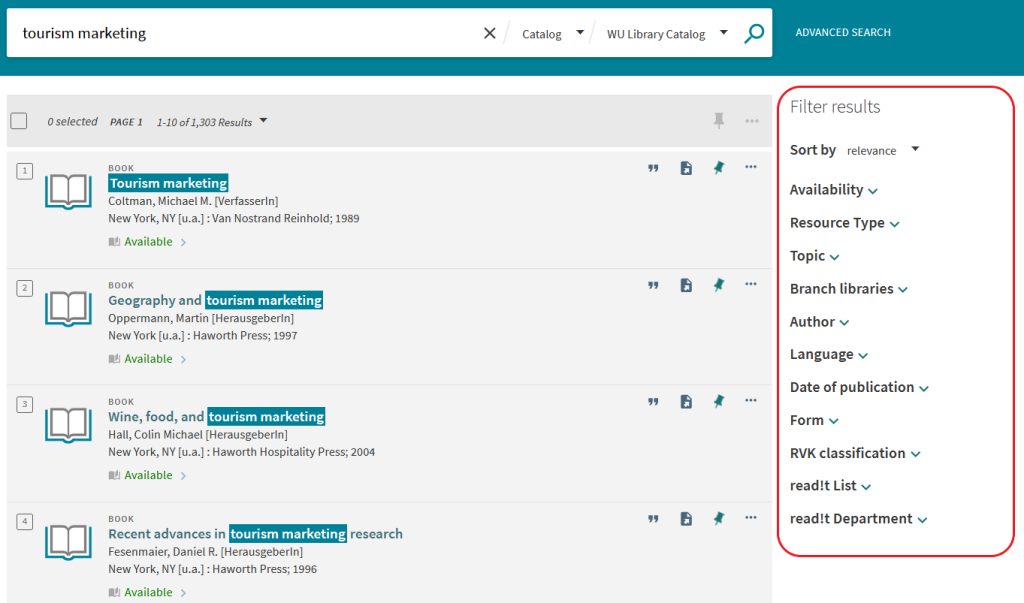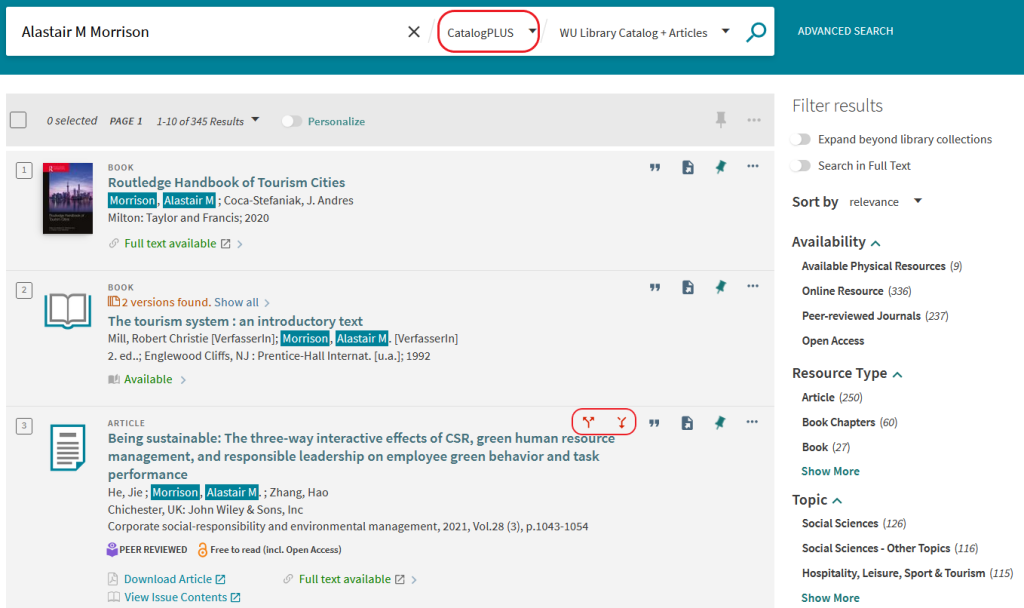Searching through library catalogs and databases can be a bit tricky at times. Particularly when you’re just starting a search, the number of results can seem quite overwhelming. But don’t worry, there are ways to make it work for you. You can narrow down your results by using filters, checking if what you need is available, and even discover more sources based on what you’ve already found.
- How can I refine my search results to find relevant literature?
- How can I use my search results to find more sources?
How can I refine my search results to find relevant literature?

You can use filters to make your search more precise. For instance, in the WU Catalog, you have different ways to organize your results list and exclude unwanted hits. By setting criteria like language, publication year, or online availability, you can narrow down the results to what you’re really looking for.
Make sure to check your search results carefully. Look beyond just the title and authors; also, pay attention to information about availability. This will save you from frustrating situations where you can’t access promising resources.

How can I use my search results to find more sources?
You can uncover more sources by using the literature you’ve already found. Just take a look at the references mentioned in the articles or books you’ve found, and you might discover new and useful sources. It’s a way to expand your search and find extra materials that could be helpful for your research.
Bibliographies
If you’ve already found some articles or books that are relevant to your topic, think of them as your starting point. Examine the references mentioned in those sources, and you might find more literature worth checking out. Keep doing this as needed. Just remember, very recent literature may not yet have been cited.
Follow an author or journal

If you want to find more sources on your topic, one good strategy is to follow well-known authors or journals in the field. See if there are leading experts who regularly publish in reputable scientific journals. You can subscribe to these journals or use databases like Scopus, ResearchGate, or Web of Science to search for specific authors. In the WU Catalog, you can also easily check the “Details” of an article to find more publications by authors whose research you’ve already found relevant to your topic.
Citation Trail
In CatalogPLUS, there’s a neat function that lets you do a two-way search based on an article you already have. This means you can find articles that are mentioned in the references of that article (in its bibliography), and also discover articles that cite the article you’re looking at. It’s a handy way to explore related research.
To do this, just click on one of the two red arrow icons:
![]() for articles cited by this publication
for articles cited by this publication
or
![]() for articles citing this publication
for articles citing this publication

Now that you’ve located literature on your topic, the next question is: How can you ensure that these sources are scientifically reliable? How can you read more efficiently? There are some helpful tips and techniques to help you with that.
If you’re looking for help in keeping your sources organized, you can check out information on reference management software here.
